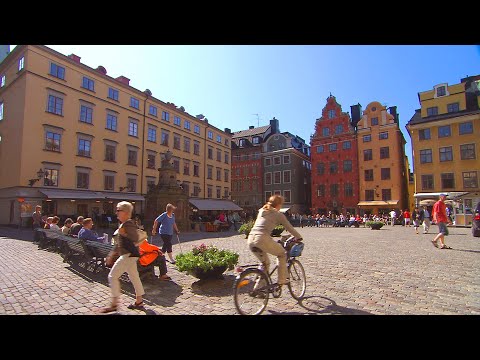
Nestled on the eastern coast of Sweden, where Lake Mälaren meets the Baltic Sea, Stockholm stands as a harmonious blend of stunning natural beauty and vibrant urban culture. Known for its immaculate architecture, sprawling green spaces, and rich historical tapestry, Stockholm offers a unique European experience that captivates tourists from around the globe. This article delves into the various facets of Stockholm, from its intriguing history to its modern-day allure.
#### Historical Overview
Stockholm’s roots stretch back to the 13th century when it was founded by Birger Jarl with the aim of fortifying Sweden’s access to the Baltic Sea. Over centuries, it blossomed into a major trade hub due in part to its strategic location. The city’s old town, Gamla Stan, is one of Europe’s best-preserved medieval city centers, with narrow cobblestone streets and ochre-colored buildings that tell tales of yore. The Royal Palace and Storkyrkan Cathedral in Gamla Stan are testaments to the city’s regal past and architectural grandeur.
#### Cultural Tapestry
Stockholm is often referred to as the ‘Venice of the North,’ spread across 14 islands connected by over 50 bridges that enhance its scenic landscape. Each district has a distinct character: Södermalm is known for its bohemian flair and vibrant nightlife; Östermalm for its upscale shopping and residential areas; while Djurgården houses many of the city’s cultural institutions and museums.
Art enthusiasts will find plenty to admire in Stockholm. The Moderna Museet boasts an impressive collection of contemporary art, including works by Picasso and Salvador Dalí. Similarly, Fotografiska celebrates photography from both renowned global photographers and emerging talent.
#### Innovation and Sustainability
Stockholm is widely recognized as one of Europe’s most sustainable cities. It integrates green practices in various facets of urban life from eco-friendly public transportation options like bikes and electric buses to energy-efficient buildings that utilize renewable energy sources. Moreover, it aims to become fossil-fuel-free by 2040—an ambitious goal that reflects its commitment to environmental stewardship.
#### Culinary Delights
Swedish cuisine in Stockholm offers a mix of traditional dishes such as köttbullar (Swedish meatballs) and modern Nordic cuisine which emphasizes local ingredients, simplicity, and purity in flavor. The city also hosts a range of international eateries reflecting its cosmopolitan nature.
For those looking to try classic Swedish treats in an authentic setting, there are numerous cafés serving fika—a traditional Swedish coffee break that includes coffee alongside sweets like cinnamon buns or cakes.
#### Festivals and Events
Stockholm’s calendar brims with exciting events throughout the year ranging from cultural celebrations like the Summer Solstice festival—marked by singing and dancing around maypoles—to prestigious award ceremonies such as the Nobel Prize Banquets held every December at City Hall.
#### Conclusion
Stockholm vibrantly combines tradition with modernity making it an irresistible destination for travelers seeking depth in culture coupled with cutting-edge innovation. Whether navigating through its historic lanes or enjoying a serene boat ride across archipelagos adorned by pristine natural vistas or indulging in culinary exploits—the spirit of Stockholm is sure to enchant everyone who visits this splendid Scandinavian capital.
